Samsung Galaxy Ring vs Oura Ring — everything we know so far
Two rings to rule them all
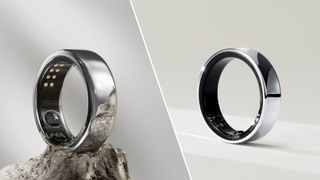
Samsung’s been teasing it for a while, but the Galaxy Ring is finally here and we’re starting to get our first glimpses of the tech inside the company’s miniature wearable. But how will it stack up against the current market leader, the Oura Ring?
After all, the Samsung Galaxy Ring has a lot to live up to. The third-generation Oura Ring is one of the best fitness trackers available right now, it comes in several finishes and can track your sleep, measure your heart rate, respiratory rate, and body temperature.
From what we can tell so far, the Galaxy Ring may match up well. And, of course, since it's 2024, it’ll also use AI to help make sense of the data and turn it into actionable tasks for you to look after your health and body. So, here’s what we know so far about the Samsung Galaxy Ring vs Oura Ring.
Samsung Galaxy Ring vs Oura Ring: price
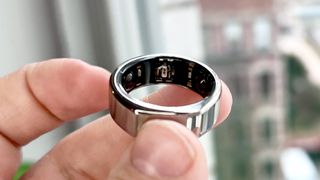
The Samsung Galaxy Ring retails for $399, which makes it more expensive than the Samsung Galaxy Watch 7 ($299). This feels a lot, especially when the Oura Ring retails for $299. But to use the Oura Ring, you need an Oura Membership for $5.99 per month to get personalized insights and live heart rate tracking.
Meanwhile, there is no subscription or membership charge for the Galaxy Ring; once you own the ring, all the features are free to use. The data syncs via Bluetooth to the Samsung Health app on your Samsung phone, where the recordings are analyzed.
Of course, they may one day decide to take the Fitbit route, and launch a service like Fitbit Premium inside Samsung Health. In that case, there may be some limited data viewable in the app for free, but you’d need a subscription for detailed analysis and recommendations, though there's no indication of this at the moment.
Samsung Galaxy Ring vs Oura Ring: design
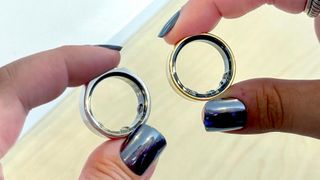
Unsurprisingly, the Samsung Galaxy Ring looks like..a ring. It's slightly wider and thicker than a standard ring, but is similar to the Oura Ring. This wasn't unexpected, as we saw the Galaxy Ring at MWC in February, where the company locked a few of the smart rings in several colors in a glass box.
It comes in three colors — Black, Gold, and Silver — so you do have some degree of personalization. Meanwhile, the Oura Ring is available in Silver, Black, Gold, and Stealth, so Samsung may be taking design cues from Oura here.
The Oura Ring is also extremely comfortable to wear all day, and it's lightweight enough that you can pop it on and forget about it. While reviewing the Oura Ring, we even accidentally tested out the ring’s waterproofing after it fell into the laundry and emerged unscathed.
The Galaxy Ring is IP68-rated for water resistance, so it should survive immersion in 1.5m for up to 30 minutes, making it safe for showers, workouts, and daily use. It's helpful both brands took this approach, as it would be a pain if you had to take it off every time you cleaned your hands, washed the dishes, or did a sweaty workout.
Despite the small size of both trackers, we have some detail on how long the battery will last. The Oura Ring can go up to a week, although we found it is closer to five days in practice. Although we haven't had a chance to go long-term testing on the Galaxy Ring, Samsung suggests seven-day battery life on the largest ring.
This is a slight disappointment, as earlier in the year, Samsung's VP of digital health, Dr. Hon Pak, reportedly said that the Galaxy Ring will achieve 9 days of use between charges, outperforming the Oura Ring by two days.
Samsung Galaxy Ring vs Oura Ring: features
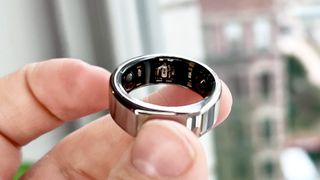
The first-generation Oura Ring was more like a fitness tracker without a display, but the latest edition takes a more holistic approach, designed to help you monitor your activity, but also how you feel physically and mentally using 20 biometric signals captured by its various sensors.
So, like the best Fitbits, you can track your steps, calorie burn, and overall activity levels. However, it doesn’t support workout tracking, so you either need a separate smartwatch or fitness tracker, or log your sessions in Apple Health or Google Fit and sync them to the Oura app.
The Galaxy Ring also covers the fitness tracking essentials, like step counting, heart rate monitoring, and sleep tracking. Most wearables also now offer some degree of female health tracking and cycle monitoring, and that's also the case with the Galaxy Ring, which offers period tracking and prediction.
This helps it compete with the Oura Ring, which integrates with the birth control app Natural Cycles, to track your menstrual cycle. The ring measures your temperature in the morning, and syncs that to Natural Cycles to inform your daily fertility status.
It’s impressively accurate, as our fitness editor found that the Oura Ring actually saw signs of her pregnancy before she did. Samsung has a similar partnership with Natural Cycles on some of its Galaxy smartwatches, including the Samsung Galaxy Watch 6, but the Ring's implementation is slightly different.
For Oura's version, you need an Oura membership and a Natural Cycles subscription (for $20 per month), but you get full access to Natural Cycle's fertility, period tracking, and contraceptive features. Meanwhile, Samsung's edition is subscription-free.
But it's not all good news, as Samsung has only added a limited version of Natural Cycle's tech to the Samsung Health app, so you can track and monitor your periods, but you can't use the full array of pregnancy and fertility planning features.
As the competition between the two brands heats up, Oura has continued adding features to its existing models, like the Cardiovascular Age and Cardio Capacity heart health monitoring rolled out in May 2024. Plus, Oura launched Labs, so you can try new features before they're ready for the masses, along with a new AI Advisor.
Samsung Galaxy Ring vs Oura Ring: compatibility
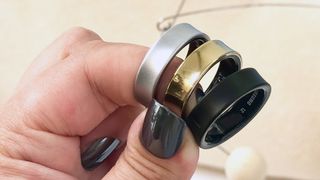
The Oura Ring is designed to work with iPhones and Android smartphones, but the Samsung Galaxy Ring will likely take a different approach. From what we've seen so far, Samsung has been very clear that it intends to build a Galaxy ecosystem around the Health app.
In that sense, they’re following in Apple’s footsteps — you’ll buy a Samsung Galaxy smartphone, wear a Galaxy Watch 7 or Watch Ultra for workouts, and track your overall activity and sleep using the Galaxy Ring, with all the data easily accessible in the Samsung Health app.
So, while the design of the Galaxy Ring definitely positions it as an Oura Ring competitor, Samsung sees it as a way to passively gather data that you can use as part of the wider Galaxy ecosystem to improve your health and well-being, rather than a standalone device like the Oura.
And, according to a post in the Samsung Newsroom, the company hopes to use AI-powered insights to give actionable recommendations in the Samsung Health app, like the new My Vitality Score, based on the data gathered by your various Samsung devices, which also suggests an ecosystem-style approach.
Samsung also seems to be giving all of its products an AI-focused makeover, as there are several AI health and fitness features on the new Galaxy watches, lending support to the idea that you wear the watch and ring in tandem.
Samsung Galaxy Ring vs Oura Ring — which comes out on top?
Whether you pick up the Oura Ring right now or wait a little longer for the Samsung Galaxy Ring will likely depend on whether you own a Samsung phone. It’s clear that Samsung is emulating Apple’s approach and creating a seamless ecosystem of gadgets, data, and software.
So, if you’re a fan of the ring form factor to keep tabs on your health and well-being but use an iPhone or other Android device, the Oura Ring is the better option. However, the Oura Ring’s true cost is higher than its $299 price tag.
To get the most from the wearable, you’ll also need to take out the $5.99/month membership to get access to personalized insights, which is a feature that may be available free of charge in the Samsung Health app.
However, if you're after an non-Oura ring and don't want to wait for Samsung to actually get its wearable out the door, the Amazfit Helio Ring launched in May 2024. We've been trying it out and our first impressions of the Helio Ring are pretty positive, so both popular brands could be in for some stiff competition.
More from Tom's Guide
Get the top Amazon Prime Day deals right in your inbox: Sign up now!
Receive the hottest deals and product recommendations alongside the biggest tech news from the Tom's Guide team straight to your inbox!

James is Tom's Guide's Fitness Editor, covering strength training workouts, cardio exercise, and accessible ways to improve your health and wellbeing. His interest in fitness started after being diagnosed with a chronic illness, and he began focusing on strengthening his core, taking regular walks around the city, and practicing meditation to manage the symptoms. He also invested in fitness trackers, home workout equipment, and yoga mats to find accessible ways to train without the gym. Before joining the team at Tom’s Guide, James was the Fitness Editor at Fit&Well, where he covered beginner-friendly exercise routines, affordable ways to boost your wellbeing, and reviewed weights, rowing machines, and workout headphones. He believes that exercise should be something you enjoy doing, so appreciates the challenge of finding ways to incorporate it into everyday life through short muscle-building sessions, regular meditation, and early morning walks.